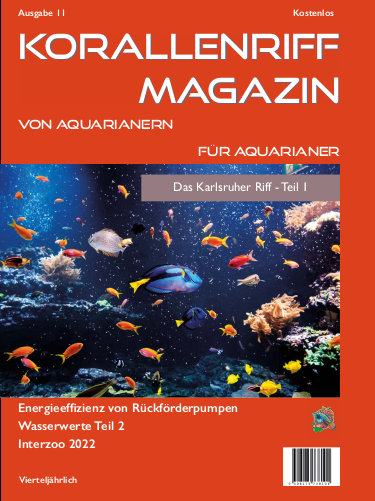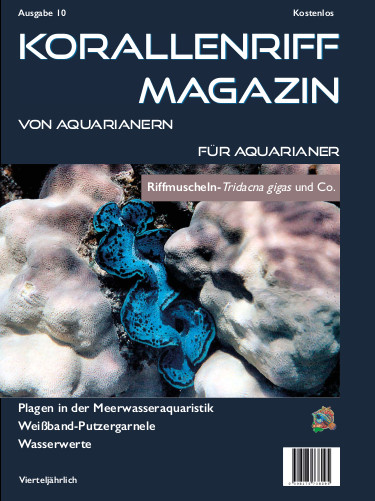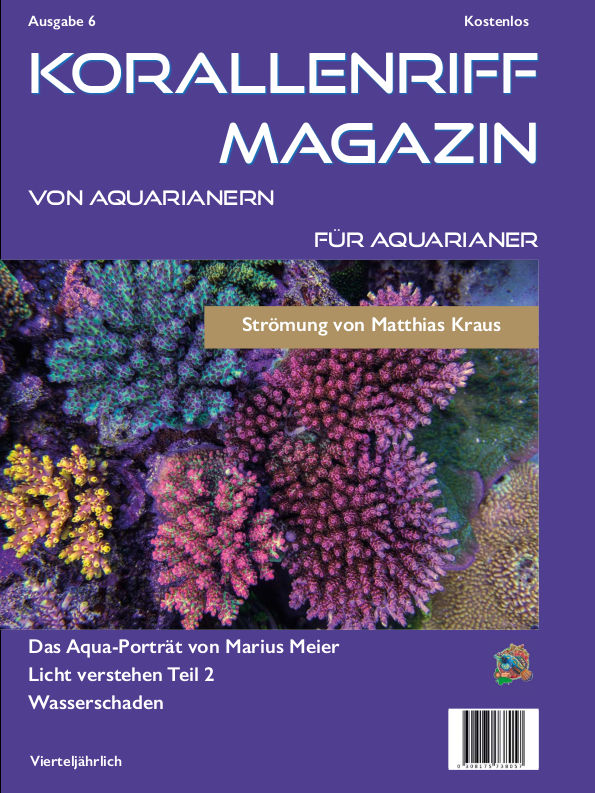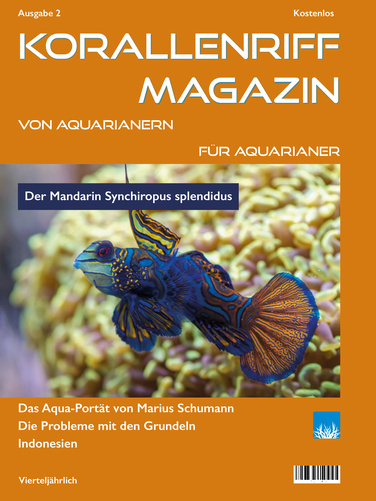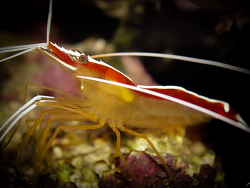Info
The white-banded cleaner shrimp (Lysmata amboinensis) from the Infopacific is a strikingly colored shrimp species from the genus (Lysmata) within the cleaner shrimp and marble shrimp family (Hippolytidae). They are usually found in caves and crevices from about 10 meters deep.
Probably the best known of the cleaner shrimp, it is easy to keep in itself and does not make great demands on aquarium design. The cleaning activity is especially important in the sea as well as in the aquarium, so that fish can be freed from parasites and infected skin. They crawl into the mouth of even very large fish (predators) to clean them there, and nothing happens to them.
Basic information about shrimps of the genus Lysmata:
These shrimp are hermaphrodites, meaning hermaphrodites, in that they have female ovaries and male testicular tissue, but cannot fertilize themselves.
Distinguishing feature from Lysmata grabhami:
Lysmata grabhami lives in the Atlantic and Caribbean. In Lysmata grabhami the white dorsal stripe is continuous from head to tail end. The tail shows a white stripe on the left and right side.
In Lysmata amboinensis the white dorsal stripe goes from the head only to the beginning of the tail and ends there with a cross stripe. The tail shows 2 white dots each on the left and right side and it has a continuous white stripe on the back, which is interrupted in Lysmata amboinensis.
Lysmata amboinensis should not be socialized with sea hares (Aplysia species) or giant clams (Tridacna). Likewise, the shrimp will attack sea anemones or steal the food caught by the sea anemones. The same can be observed when feeding corals.
You should always offer your fish a cleaning opportunity, as they feel much more comfortable. It is important that they are carefully and slowly adapted to the aquarium water, as they do not tolerate density fluctuations well, like all crustaceans.
Please never add more than two shrimp to an aquarium, as these shrimp tend to kill all other shrimp of the same species. This happens - according to a report of two scientists - always when, these are most defenseless, e.g. when moulting. According to scientific findings, this shrimp lives in nature as a pair and never occurs in large grooming groups. They are quite aggressive towards conspecifics, but pair-bonded (Fiedler, 2000). Lysmata amboinensis is often found in isolated pairs in separate, divided cavities with eels and other cleaning hosts in the wild (Fiedler, 2000).
Lysmata amboinesis lays eggs that the adult shrimp hold on their pleopods. The early larvae are called nauplii, which hatch into more developed larvae, the zoeae, and undergo a free-floating planktonic stage. During this time, they feed on other plankton and molt through 14 identified stages, growing to a length of about 2 cm over 5-6 months. At this point, the larvae will settle and metamorphose into a more mature form, but not yet into the adult state. This is achieved after several molts, which occur every 3-8 weeks.
Each shrimp begins as a male, but after a few molts becomes a hermaphrodite, which allows them to function as both male and female in interactions with another shrimp. These shrimp do not have a pure female form. This form of sexual maturation is scientifically termed "protandrous simultaneous hermaphroditism" and is unique among other decapod shrimp in Lysmata shrimp.
During spawning, adult shrimp produce between 200 and 500 eggs that are initially attached to the pleopods and are greenish in color. The eggs swell and become lighter in color before hatching. Some turn silver on the day of hatching. Hatching occurs at dusk and 3-4 mm larvae are released into open water where they live planktonic life.
Lysmata amboinesis lays eggs that the adult shrimp hold on their pleopods. The early larvae are called nauplii, which hatch into more developed larvae, the zoeae, and go through a free-floating planktonic stage. During this time, they feed on other plankton and molt through 14 identified stages, growing to a length of about 2 cm over 5-6 months. At this point, the larvae will settle and metamorphose into a more mature form, but not yet into the adult state. This is achieved after several molts, which occur every 3-8 weeks.
Each shrimp begins as a male, but after a few molts becomes a hermaphrodite, which allows them to function as both male and female in interactions with another shrimp. These shrimp do not have a pure female form. This form of sexual maturation is scientifically termed "protandrous simultaneous hermaphroditism" and is unique among other decapod shrimp in Lysmata shrimp.
During spawning, adult shrimp produce between 200 and 500 eggs that are initially attached to the pleopods and are greenish in color. The eggs swell and become lighter in color before hatching. Some turn silver on the day of hatching. Hatching occurs at dusk and 3-4 mm larvae are released into open water where they live planktonic life.
Translator's report from a diver in Tanzania: "White-banded cleaner shrimp (Lysmata amboinensis) are usually sighted quite deep, usually around the 20-meter mark. They are rarely seen shallower in Tanzanian waters. They are usually found in a large group at the entrance to a small cave. Members of the group are usually in pairs or singly and keep their distance from each other.
Although there may be twenty to thirty shrimp in the group, they are usually 20 to 30 cm apart. Occasionally you will see just one pair together, but more often there is a group. There are often other shrimp species with them and they are often seen in association with the Durban Dancing Shrimp (Rhynchocinetes durbanensis), with which they seem to coexist quite peacefully.
Lysmata amboinensis are distributed throughout the Indo-Pacific region. They occur from South Africa along the East African coast to Australia and New Zealand and as far north as Japan and over to Hawaiii. On the Tanzanian coast they are found from depths of 20m downwards.
They feed on parasites and dead skin of client fish as well as detritus.
Lysmata amboinensis are simultaneous hermaphrodites and each individual is capable of carrying eggs. There seems to be some debate as to whether they are able to store sperm, but the preponderance of evidence seems to indicate that they cannot. Reading all the conflicting articles, it seems that fertilization can only occur after a molt.
When the eggs hatch, the larvae go through several larval stages. There appear to be at least ten of these stages, and development to adult takes at least three months, but possibly a bit longer. They take about 6 months to grow to 4 inches in size.
Pacific Cleaner Shrimp are collected for marine aquariums and in some areas this collection has significantly reduced the population. They have been bred in captivity but are difficult to grow due to their long larval stage of three months and even the best programs have only an 11% success rate.
Due to their beneficial fish and tank cleaning habits, Lysmata amboinensis are very popular with aquarists. In the confined space of an aquarium, it is reportedly impossible to keep more than one pair, as they will attack and kill each other. Possibly this results from competition for a limited amount of food. In the wild, we have observed them in groups of twenty to thirty in fairly small burrows. We have never seen any aggression between shrimp in these burrows, but they do keep their distance from each other.
Synonymised names
Hippolysmata amboinensis De Man, 1888 · unaccepted > superseded combination
Hippolysmata vittata var. amboinensis De Man, 1888 · unaccepted > superseded combination






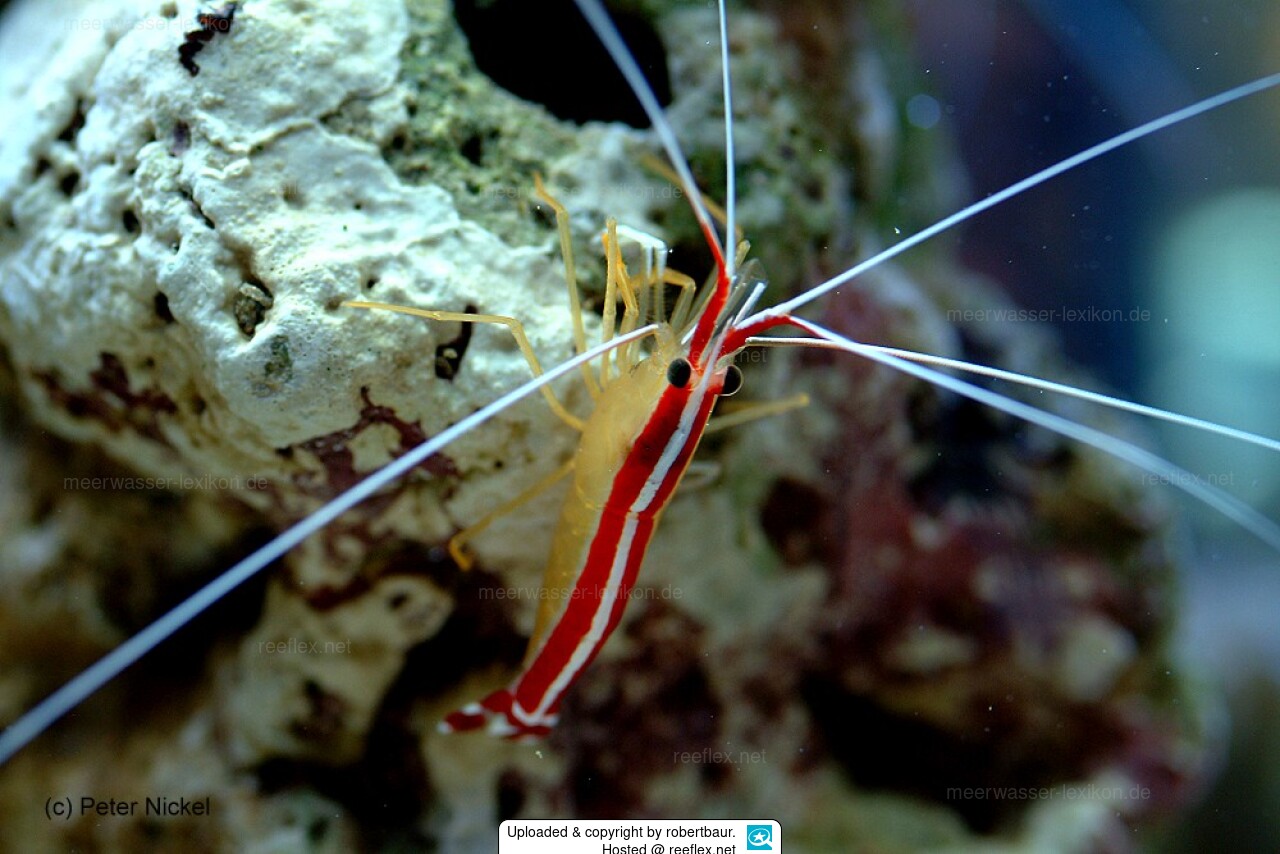
 robertbaur
robertbaur






























